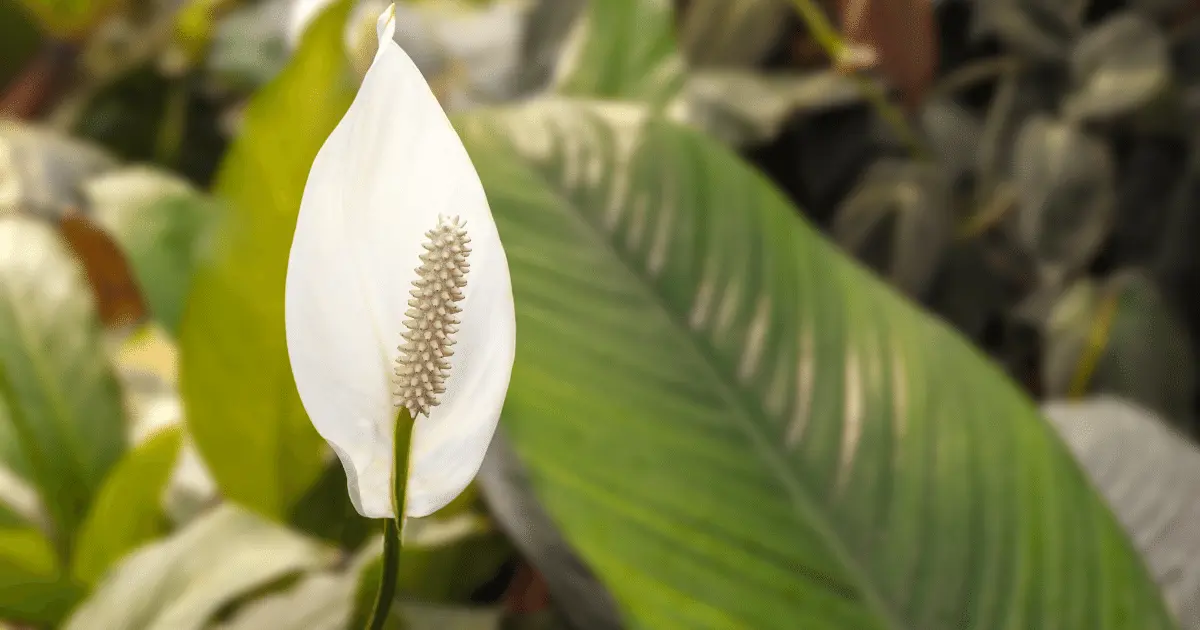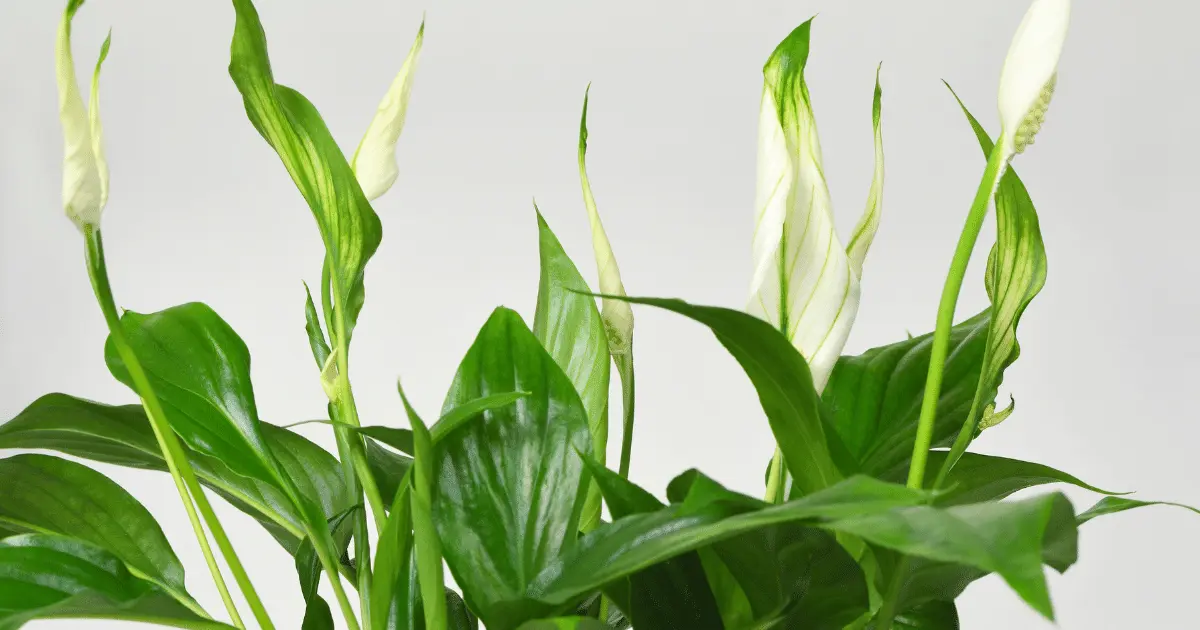If you have a peace lily plant at home, you may have noticed that its leaves turn yellow at once. It’s a common problem. However, there are many answers to why this is happening.
There are a few different things that could be causing your lily’s leaves to turn yellow. To figure out how to treat your plant, it’s important to understand what might be causing the problem.
Why Do Peace Lily Leaves Turn Yellow?

A lack of nutrients is one of the most common reasons for peace lily leaves turning yellow. While peace lilies are relatively low-maintenance plants, they need to be fertilized every few months to ensure they get the nutrients they need to stay healthy.
Peace lilies need nutrients such as nitrogen, potassium, and phosphorus. In peace lilies, nitrogen stimulates growth, potassium regulates water distribution among the cells, and phosphorus supports vigorous rooting. Also, green materials such as grass contain high nitrogen levels to encourage growth.
If peace lily leaves turn yellow, check the plant’s soil. If the soil is dry or has a small amount of fertilizer, that could be the problem. You can try fertilizing your peace lily with a general-purpose fertilizer or a fertilizer made specifically for houseplants. Most general-purpose garden fertilizers contain nitrogen, phosphorus, and potassium (NPK), the main nutrients, plus varying amounts of magnesium, calcium, sulfur, iron, and boron.
Watering your peace lily when it is dry to the touch should make a difference in the color of the leaves within a few days. When there is a lack of or not enough water for your peace lily, it begins to wilt or droop due to this lack of moisture. The blades wilt and will not spring back up if stepped on. For shiny plant leaves, you will notice them turning dull.
Overwatering can also lead to yellowing leaves. Peace lilies growing in too wet soil will suffer from a lack of oxygen, leading to the death of the lily roots and a loss of vigor in the plant. Overwatering can also cause stunted, slow growth, and the plants may suffer from leaf scorch or burn.
Also, make sure your peace lily gets enough light. Without enough light, it will produce less chlorophyll, which is another thing that causes the leaves to turn yellow. Make sure it’s getting bright, indirect light. You may notice that the plant internodes are longer than normal, indicating inadequate light reception. Your peace lilies will produce thin and oddly small leaves, which are other signs that less light is reaching your plant.
Looking at this, we realize several possible causes for peace lily leaves turning yellow, including too much or too little water, fertilizer problems, or pests. However, there are several things you can do to fix yellowing in peace lily leaves.
Treatment of Peace Lily Leaves Turning Yellow

Here are the different treatment methods you can apply to fix your Peace Lily leaves that have turned yellow:
1. Too Much Sun Exposure and Not Enough Light
If your peace lily is getting too much direct sunlight, the leaves will begin to turn yellow. Move the plant to a location with indirect or filtered light, and the leaves should return to their normal color within a few days. For insufficient sunlight, try moving it to a spot that gets indirect light instead by giving it a little more light each day until you find a spot where it seems happy.
2. Not Enough Water and Overwatering
Peace lilies should stay moist and not soggy. If the leaves start to turn yellow, it could indicate that the plant is not getting enough water. Water more frequently and ensure the pot has proper drainage, so the roots are not sitting in water. If you think you might be overwatering your plant, let the top inch of the soil dry out before watering again.
3. Wrong Water Used for Watering
The problem could also be that you’re using hard water. Try using distilled or rainwater instead. Or, if you don’t want to get special water for your plant, you can try letting your tap water sit out overnight before using it to water your peace lily. This will give the chlorine time and a chance to evaporate.
4. Nutrient Deficiency
Yellowing leaves can also indicate that your peace lily lacks essential nutrients. Make use of a fertilizer with much-needed content, and pay attention to following the directions on the product to achieve the desired results.
5. Pests
Aphids, mealybugs, and spider mites are all common pests that can attack peace lilies. If you see any of these pests on your plant, treat them with an appropriate insecticide or bring the plant outdoors and hose it off with water to remove them manually.
6. Disease
Peace lilies are susceptible to fungal diseases such as botrytis and powdery mildew if they are overwatered or grown in humid conditions. Many chemicals are readily available, having been produced to control plant diseases, and these products inhibit the growth of or kill the pathogens that cause the disease in peace lilies. Chemicals that are used to control bacteria (bactericides), fungi (fungicides), and nematodes (nematicides) can be applied to seeds, foliage, flowers, fruit, or even the soil.
7. Overfertilizing
Be careful not to over-fertilize your plant. Too much fertilizer can cause leaf burn, turning the leaves yellow. Only fertilize your peace lily every other month using a half-strength solution of an all-purpose fertilizer.
How to Prevent Peace Lily Leaves From Turning Yellow
Prevention is always better than treatment, so ensure you care for your peace lily. Water it regularly, giving it a good soak once a week, and mist the leaves daily. Fertilize it monthly in the spring and summer, and remember to drain any excess water from the saucer after watering.
If your peace lily does start to develop yellow leaves, another thing you can do to help is to trim off any affected leaves and increase the humidity around the plant.
